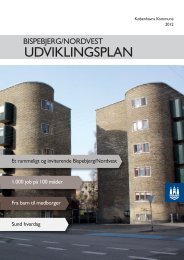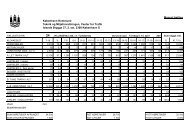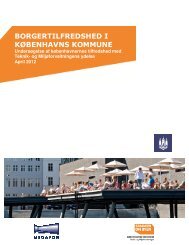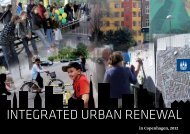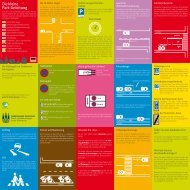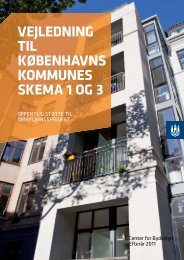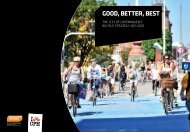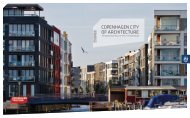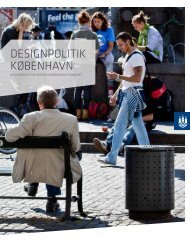SUSTAINABILITY IN CONSTRUCTION AND CIVIL WORKS - Itera
SUSTAINABILITY IN CONSTRUCTION AND CIVIL WORKS - Itera
SUSTAINABILITY IN CONSTRUCTION AND CIVIL WORKS - Itera
You also want an ePaper? Increase the reach of your titles
YUMPU automatically turns print PDFs into web optimized ePapers that Google loves.
22<br />
Producing energy with fossil fuels emits CO2, which<br />
is considered to be a major source of global climate<br />
change. Denmark has committed itself internationally<br />
to reduce its CO2 emissions. The City of Copenhagen<br />
has there over drawn up an ambitious climate plan.<br />
Its goal is to reduce CO2 emissions from energy<br />
production, transport, and waste management by<br />
20% in 2015 from the 2005 level. The City of<br />
Copenhagen also aims to be CO2 neutral in 2025.<br />
Building use consumes considerable energy. This is<br />
why more stringent standards are set for optimizing<br />
energy in new municipal construction and renovation<br />
projects than those found in the Building Code.<br />
The use of energy-efficient supplies and renewable<br />
energy can reduce the use of fossil fuels and thus<br />
CO2 emissions.<br />
Gemeindezentrum in Ludesch; Vorarlberg, Austria, Hermann Kaufmann, 2006<br />
This cultural and community centre was constructed so that it meets the standards for<br />
passive-energy houses. The outer walls and roof were insulated with cellulose/paper (30<br />
cm) and sheep’s wool (10 cm). The building is heated by a pellet furnace, fi red with a<br />
bi-product from the local wood-processing industry. A geothermal system pumps air 35<br />
meters down into the earth, where there is a constant temperature of 7 degrees. The air<br />
is heated in the winter and cooled in the summer and circulated in the building’s heating/<br />
cooling system. Water is heated by a solar-heating unit installed on the roof of the building.<br />
Electricity is supplied from a 350-sq-m. photo voltaic units mounted on the plaza in front of<br />
the building.<br />
Integrated photo voltaic panels on youth flats, Århus, Denmark<br />
The southern façade consists of 84 photo voltaic panels which produces approximately<br />
12 kWh/per year. As well as functioning as a cladding system and electricity producer, the<br />
elements allow air intake with the possibility of preheating the air, when the sun is shining.



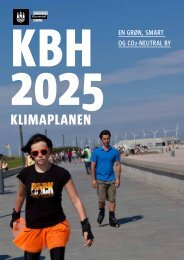

![Lokalplan 301[1] - Itera](https://img.yumpu.com/49288321/1/184x260/lokalplan-3011-itera.jpg?quality=85)
